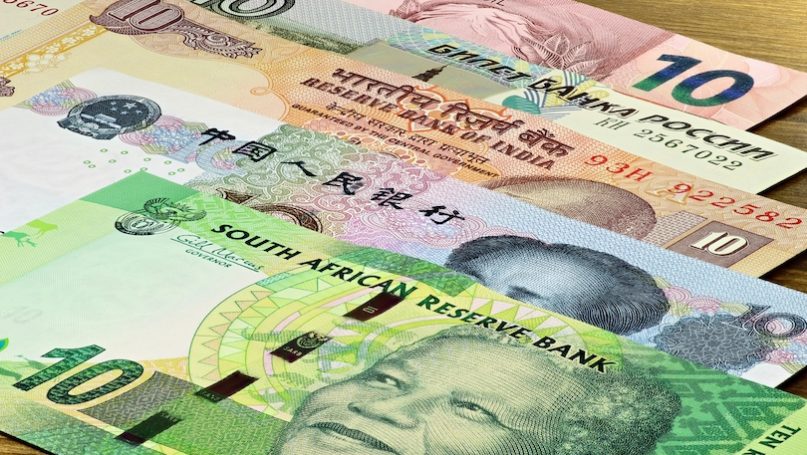
In May 2022, China urged the expansion of the BRICS with the entry of new partners. During the meeting of foreign ministers that precedes the Summit, Wang Yi, Minister of Foreign Affairs of China, announced the proposal. The expansion of the debate and the establishment of criteria and procedures for the accession of new members, through consensus as in all decisions in the BRICS, is an item on the agenda of this year’s Summit whose theme is “Inaugurating a New Era for Global Development .” Saudi Arabia and Argentina showed interest in joining the group.
However, the idea of expanding the BRICS is not new. It has its origins in 2013, when the BRICS countries, motivated by South Africa, began to invite neighbors and potential partners to follow the Summit discussions. The idea eventually gained prominence when in 2017, under the Chinese pro tempore presidency, the term BRICS Plus was launched. On that occasion, the Chinese sponsored an initiative intended to consolidate the BRICS as a cooperation platform open to new members. This notwithstanding, and despite the inclusion of the initiative in the Summit Declaration, no progress has been made on the subject. The lack of a common strategy associated with the weight and interests of each of the BRICS countries have prevented the effective expansion of the group.
It has been argued that China uses the proposal as another tool to expand its soft power. By including new members, it would be possible for the country to expand relations with new partners in parallel with the establishment of bilateral agreements in the most different sectors. By contrast, Russia sees in BRICS Plus the possibility of expanding integration with other regional blocs. In fact, this integration would serve to reinforce the weight of the BRICS in international financial organizations, the promotion of payment systems in national currencies and cooperation between regional financial institutions. In the current context of restrictions on Russia, such initiatives would protect Russian economy against Western isolation. South Africa, like Russia and China, is also interested in expanding the BRICS. With BRICS Plus, the country strengthens its position as a ‘gateway to Africa’, enhancing the attraction of resources and development for the continent.
Brazil and India seem less inclined to an expansion. The position of the Brazilian government of Jair Bolsonaro to invite the self-declared president of Venezuela Juan Guaidó to the 2019 Summit was not welcomed by its partners, and recent statements indicated obstacles to Argentina’s interest in joining the BRICS. In the case of India, it is a matter of ideological conflict with Pakistan. The proposal to expand embeds an opening to Pakistan’s ambitions with whom India has a historical border conflict. To this, is added the perception that an expansion of the BRICS in India’s sphere of influence would favor Chinese interests related to the Belt and Road Initiative (BRI) and, specifically, to the China Pakistan Economic Corridor (CPEC). Despite the Covid-19 pandemic, which has hindered the accession of new partners due to the rigidity of the remote working format, the new incursion of countries in the subject re-opens new challenges.
According to Arapova and Lissovolik, BRICS Plus would serve as a tool for the promotion of multilateralism, shedding light on the problem of underrepresentation of emerging and developing countries in global governance bodies. The New Development Bank (NDB) has acted in this direction. Reflecting the consensus and best indicative of the BRICS’ advances, it has adopted cooperation mechanisms that seek to equalize the differences in the capacities of the members, including quotas of committed resources and weight in votes within the body. The NDB, between 2021 and 2022, admitted (or has prospected) the entry of new members: Bangladesh, UAE, Egypt and Uruguay.
Experience in the NDB must be evaluated sparingly, as the bank has international legal personality and clear rules informing its bureaucracy about the criteria and procedures for new members. BRICS does not. Daldegan and Carvalho argue that the BRICS articulation admits an original dynamic insofar as it is developed according to the members’ perceptions of the world scenario, without defining the limitations surrounding the strategies and initiatives of each member country. In addition, members do not determine end goals or its institutionalization, but they move forward through specific processes. Based on these elements, the discussion for the expansion of the BRICS will take place.
In the context of the Russo-Ukrainian conflict, spurring the growth of NATO and the isolation of Russia due to sanctions, plus the Chinese proposal for the Global Security Initiative, expanding BRICS seems to serve as a counterpoint to exclusionary Western actions. Although it is stated that an expansion with new partners does not represent a direct antagonism towards the West, the purpose is clear.
Bringing together new partners and increasing the interaction of emerging and developing countries seem to be a plausible alternative to safeguard interests, especially Chinese and Russian ones. Although there is no consensus, the expansion could give the BRICS a new role. New partners and new strategies? The challenges are numerous.
Further Reading on E-International Relations
- Opinion – The Expansion of BRICS: Challenges and Uncertainties
- Opinion – The Status of the BRICS, 20 Years Later
- India-China Rivalry and its Long Shadow Over the BRICS
- Beyond Geopolitics: Re-Examining Russia’s BRICS Relationship
- The Role of BRICS in India’s Foreign Policy
- Adding ‘T’ to BRICS: A NATO Ally in Transition